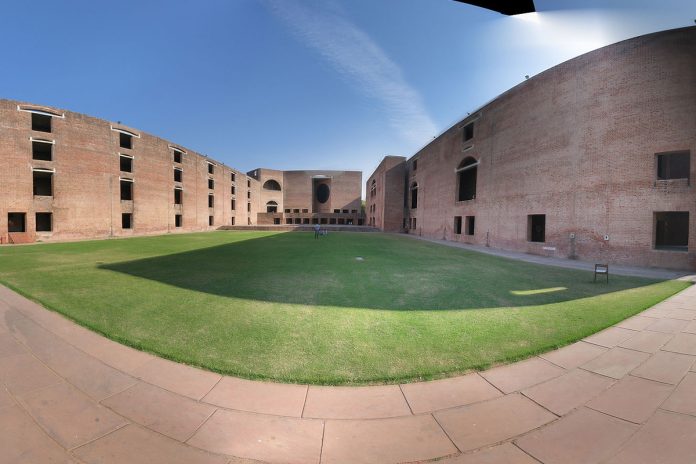New Delhi: IIM-Ahmedabad ranks within the top 25 globally for business and management studies, with IIM-Bangalore and IIM-Calcutta also securing positions within the top 50, as per the QS World University Rankings by Subject unveiled on April 10th.
Jawaharlal Nehru University has achieved the top ranking in India according to the prestigious rankings released by Quacquarelli Symonds (QS), a prominent higher education analytics firm headquartered in London. Globally, the university is positioned at 20th for development studies.
The Saveetha Institute of Medical and Technical Sciences in Chennai has secured the 24th position globally for dentistry studies.
Jessica Turner, CEO of QS, emphasized India’s educational challenges, particularly in providing high-quality tertiary education amidst increasing demand. She highlighted the ambitious target set by the National Education Policy (NEP) of achieving a 50 percent gross enrollment ratio by 2035. Turner expressed reassurance regarding the increasing number of Indian programs featured across QS’s 55 subject rankings and five broad faculty areas, rising from 355 to 454.
She also acknowledged the progress made by several programs at India’s three privately-run Institutes of Eminence, indicating the positive impact of well-regulated private provision in enhancing India’s higher education sector. While recognizing the ongoing need to improve standards, access to higher education, digital readiness of universities, and global competitiveness, Turner underscored India’s significant strides in the right direction.
In the latest QS World University Rankings by Subject, India has showcased notable advancements, including a remarkable 20% enhancement in the Citations per Paper indicator, indicative of its robust research capacity.
Moreover, there has been a notable 16% surge in the International Research Network indicator, underscoring the expansion and diversity of research collaborations.
Nevertheless, there was a slight downturn of 5% in the H Index, highlighting a minor decrease in the equilibrium between research productivity and its influence.
According to QS, India is emerging as one of the world’s fastest-growing research hubs. Between 2017 and 2022, its research output surged by an impressive 54%, as per data from Scopus/Elsevier, QS’ bibliometric and research affiliate. This surge not only surpasses the global average but also outpaces the output of its more traditionally recognized Western counterparts.
“In terms of volume, India now stands as the world’s fourth-largest producer of research, generating 1.3 million academic papers during this period, trailing only behind China with 4.5 million, the United States with 4.4 million, and slightly less than the United Kingdom with 1.4 million,” remarked Ben Sowter, QS’ senior vice-president.
“India is poised to overtake the United Kingdom in research productivity given its current trajectory. However, in terms of research impact, measured by citation count, India ranks ninth globally for the 2017-2022 period. While commendable, prioritizing high-quality, impactful research and its dissemination within the academic community remains the crucial next step,” Sowter emphasized.
A notable challenge facing India is its performance in securing citations in premier global journals, as indicated by CiteScore metrics. Between 2017 and 2021, only 15% of India’s research received citations in these top-tier journals. This stands in stark contrast to its closest competitors in research volume, such as the United Kingdom and Germany, which reported citation percentages in top journals at 38% and 33%, respectively.
Sowter remarked, “India is undeniably emerging as a significant player in the international academic community, despite challenges such as enhancing research standards, educating the world’s largest school-age population, and fostering economic growth and competitiveness while addressing the growing labor market demands.“
The 2024 QS World University Rankings by Subject offer independent comparative analysis on the performance of over 16,400 individual university programs, taken by students at more than 1,500 universities in 95 countries and territories. These rankings cover 56 academic disciplines and five broad faculty areas, including Arts and Humanities, Engineering and Technology, Life Sciences, Natural Sciences, and Social Sciences.
In the broader Asian regional landscape, India has secured the second position in terms of the number of universities featured, with 69 institutions, second only to mainland China with 101 universities. Additionally, India holds the fourth position in the total number of ranked entries, totaling 454, following China (1,041), Japan (510), and South Korea (499).
India ranks fifth regionally for the number of entries within the top 200 and sixth for the number of entries within the top 100.
QS employs five key metrics to compile the subject rankings. The weighting of each metric varies by subject to accommodate different publication cultures across disciplines. For instance, research performance, assessed through analysis of the bibliometric database Scopus/Elsevier, is considered a more significant indicator of institutional strength in fields like Medicine, where research dissemination plays a critical role, compared to fields like Performing Arts, which have a more vocational focus.

